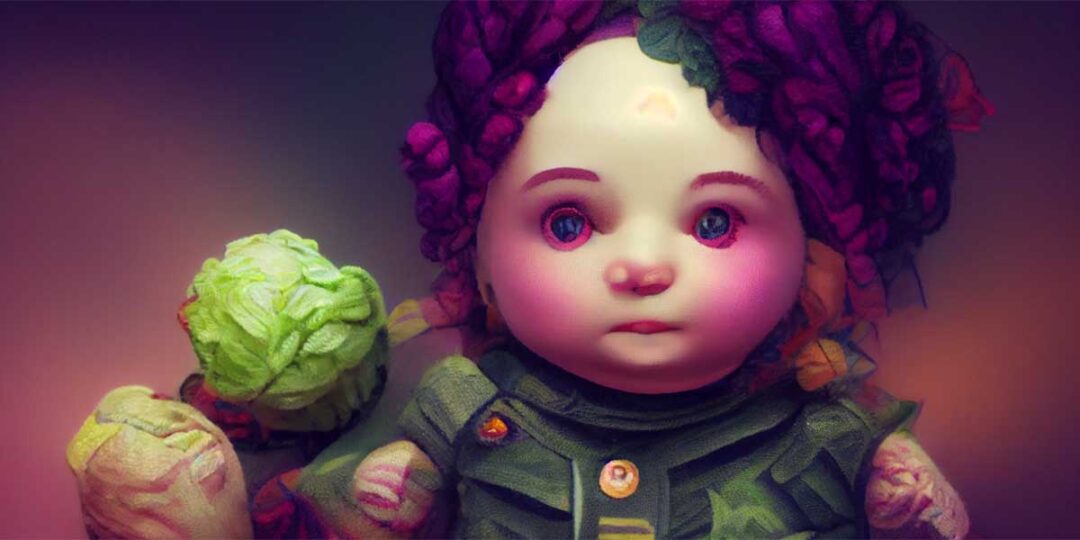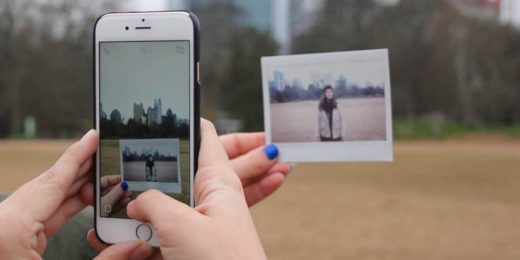This list of terms was inspired by an article on creativeblog.com. But let’s not let the NFT crowd exclude the rest of us with their cliquey jargon. Here is my guide to NFT terms… some of which have been around for a while.
Let’s start with NFT, or Non Fungible Token. Probably the least user friendly acronym since www.
The etymology of the word fungible goes back to medieval Latin meaning to perform or enjoy or ‘to serve in place of’. Until NFTs came along, this word would be one for Scrabble players and crossword geeks only.
Non-Fungible basically means unique.
While some software engineers decided that token would be a good word to use in the context of computers transacting with each other, using the meaning of the word as a voucher for exchange. The word token has two other meanings that are not always positive, so perfect to be adopted by the NFT community.
Token can also mean a thing serving as a representation of a fact, but is usually used preceded by the work small e.g. ‘a small token of my appreciation’. Token can also be used as a pejorative as something done for the sake of appearances e.g. the token woman on the board.
What does that all mean? A fungible token is something like a dollar note. They are all the same and can be exchanged at the same value.
Most NFTs are basically digital Cabbage Patch Dolls. A fad that leverages cognitive bias and confidence tricks to flog vapourware and snake oil to unsuspecting marks. And if that sound harsh, just look at some of the language the NFT community uses.
- 1:1 Art: Also known as art. A one off. A single piece. Not part of a print-run or an algorithmically generated set of 20,000. A tiny part of the NFT space, but the part that lends some legitimacy to the rest.
- AB: Probably only listed in the original article as an affiliate advertisement as the words Art Blocks here linked and set off a ‘doubleclick’ API on hover.
- Airdrop: A freebie. Like when your favourite ecommerce store puts something in your basket without asking or it just arrives with your delivery. Something worthless that they are trying to get rid of or costs them nothing to give away.
- AFAIK: Not an NFT or Web3 term at all. This abbreviation for ‘As far as I know’ has been traced back to 1988 on Usenet, but was probably most popular when SMS text messages were only 160 characters, typed on a 9 digit phone pad and cost 10 cents each.
- AMA: Ask Me Anything has been around since the 1990s. There was even an AOL chat room with this title. Since NFT people were not born in the 1990’s these acronyms need to be re-explained, even though predictive text and other advances in technology mean that the acronyms don’t need to be used anymore.
- Ape In: Less like Apes and more like lemmings. Is probably derived from gambling. A corruption of ‘All in’. There are a lot of gambling terms in this list. To Ape-in is a way for whales to manipulate and corrupt the market, but also for those who don’t know what they are doing to lose a lot of money.
- Artificial Scarcity: This one is rarely mentioned because it breaks the whole market. The entire economic system is based on limited supply. Property in Manhattan is expensive because you can’t make the island any bigger. There are also physical restraints that mean being close to something can be convenient. In a virtual word, there is infinite supply, because the island could be made bigger, or you could just create another island. Yet another behaviour that is a finger on the scales.
- ATH / ATL: In 1985 Rita Coolidge sang the theme tune from the James Bond film Octopussy. The name of the song? All Time High. So the NFT crowd can try and claim this one for themselves, but it seems a bit older. Just another bunch of ancient finance algorithms that demonstrate the fixation with profit and loss this space has. All time High and All time Low. Used to help scan Noobs (see below)
- Bot: In 1920, a Czech writer used the word robot in a title for a play. Robot is drawn from an old Church Slavonic word, robota, for “servitude,” “forced labor” or “drudgery. In the NFT world, bots are bad things that help to manipulate markets (a common thread… ). Bots can also be used to create NFTs, churning out thousands of similar looking images by automatically assigning a set of variables to create a unique combination that is technically unique.
- BTD: Just another stock-market phrase that proves NFTs are nothing about art and all about speculation. ‘Buy the Dips’ is a tried and tested rule of market economics. Assuming those markets can not be manipulated.
- DAO: The NFT Web3 version of a co-op or kibbutz but with policy executed by bots instead of people. A Decentralised Autonomous Organisation sounds very democratic. Votes are cast to make decisions and votes are linked to things like the number of tokens you have – so just imagine the USA – one dollar owned for one vote at an election.
- dApp: A ‘decentralised application’ is a piece of software that runs locally or partly on a blockchain rather than a centralised server. Peer to Peer or P2P apps like Napster (1999) have shown the potential to be quite disruptive.
- Ded: Another example of laziness and illiteracy among the NFT community. Short for ‘Dead’, as in, ‘this NFT is dead and over, avoid’ – because that extra letter is so difficult to put in there.
- DeFi: One of the more successful implementations of Web3 technology, Decentralised Finance uses blockchain to remove banks from the process and therefore, in theory, reduce fees. On the downside, there is no consumer protection or regulation of these entities.
- Delayed Reveal: Have you ever bought a mystery flight? Well imagine buying a mystery flight but the airline got to give preference to some customers over others. Some NFT collections will sell you something at the same price as everyone else, but then arbitrarily decide who gets the good ones or the rare ones and who doesn’t.
- DEX: A bit like back-street money changers. If you want to deal in currencies that no bank would touch, there is a guy who’s willing to sell you Myanmar kyat in return for US Dollars all day long. A Decentralised Exchange is a great idea… in theory.
- DISCORD: WhatsApp for Gamers with a terrible user interface. Imagine a 1994 bulletin board with text command prompts and you have Discord. Probably popular because it wasn’t banned in places like China.
- Dutch Auction: Marketplaces and auctions have been around for thousands of years. Named after the tulip markets in the Netherlands, this system drops the price until people buy rather than the price being bid up.
- DYOR: Is a disclaimer that NFT YouTubers and ‘influencers’ use to protect themselves from being sued. ‘Do Your Own Research’, is another way of saying – ‘don’t rely on anything I am saying – If I am right, I was right, If I was wrong, well you should have looked deeper.’
- Flipping: Like buying an apartment off plan, this is common in the property market and once again indicates that the NFT space is all about speculative profits rather than loving creators and the next wave of art..
- Floor: Imagine a new suburban development where all the houses are mostly the same. Buyers can choose to customise the windows, doors, colour etc, but they are all the same floor plan in the same development. The floor is a bit like the price for the worst house in the street. There is no way to really know the value of the house because it’s a new development. It’s a form of price setting or market manipulation. The Floor Price is the lowest price of an NFT in a collection. Of course if these things were actually unique, then the floor price would be relative, like the price of the worst house in a street.
- Floor Sweeping: Yet another form of market manipulation (aka Fraud). Increase demand for something that has artificially limited supply and therefore force up the price.
- Free Minting: Imagine if you had to pay to create the dollar bill you spend. You pay for the paper, the ink and then you have to pay to buy the dollar at face value. Or, back to our housing development analogy. You buy the house off plan and the developer is not out of pocket, takes no risk.
- Fren: See Ded. Another example of illiteracy and laziness among the NFT community. This one means ‘Friend’. It’s cute when the ‘Thoughts of Dog’ twitter account does it, but we’re a bit better than that aren’t we?
- FUD: Something that artists since the dawn of time have worried about. Whether it be Van Gough drinking too much absinthe or Jean-Michel Basquiat off his head, ‘Fear, uncertainty, and doubt’, is something that artists have always wrestled with. But in this sense, FUD is yet another form of market manipulation. A kind of insider trading to force the price lower.
- FOMO: A weaponised form of peer pressure. The ‘Fear of Missing Out’ mixes ‘Keeping up with the Joneses’ with the kind of schoolyard bullying that meant if you didn’t have the right friends you were a loser.
- Gas: In the world of decentralisation and removing the middleman, Gas fees are like paying the ferryman to cross the river Styx in order to enter the afterlife. Nothing comes for free, unless you pass on those fees to the consumer. The anonymous ‘miners; charge more than Visa or Mastercard or BP or Shell, but that’s just the way it is. You got to pay the man, even in Web3.
- GM: Why use Good Morning when you can use GM, as if you were an 18 year old in 2001 using SMS. NFT people are so busy that using their phone’s predictive text function to say Good Morning is just too much work.
- HODL: Many artists are dyslexic. So maybe this means ‘Hold’ and maybe, like Neal Stephenson’s Reamde was a mistake. Others say it is an acronym for Hold on for dear life, which is something that investors in Monet and Banksy always say.. Don’t they?
- IDK: JAWTA – Just another Web2 acronym appropriated by a new generation.
- IRL: See IDK. ‘In real life’.
- Looks rare: When used in chat ‘Looks rare’ is an ironic term to mean, ‘Looks like the other 2500 NFTs in that collection’.
- Secondary market: AKA Second-Hand Market. This is where the NFTs go to die. Where the OG scammers look for Noobs to flip their overpriced whatever to. The good news for the creator is that if the artwork is resold, then they get a royalty. Yay.
- Simp: No political correctness or wokeness in the NFT community. Abuse is part of the lexicon and a simpleton is a way of humiliating certain parts of the community.
- Moonboy: If you have a problem with the word simp, then this one’s for you. There is a lot of rocket imagery in this NFT space. Lots of phallic shaped objects blasting off.
- Metaverse: An amorphous term which loosely translates as a 3D internet, but we are some ways from that. Currently means games with pixel-art like graphics like Roblox and Decentraland which are empty and soulless.
- Minting: In 886 AD, the Royal Mint was established. Now you can create coins and assets from the comfort of your computer keyboard. There is no forge, no molten metal.. Just a little algorithm that acts like an accountant and registers your NFT in the ledger.
- Noob: A phonetic abbreviation for Newbie, but worse. Newbie is a friendly term of welcome whereas noob is an insult that helps OG folk humiliate those who they have spent years trying to convince of the value of NFTs. Also a handy way to identify victims to flip worthless assets to.
- OG: First used in the 1970s, OG is an acronym for Original Gangster, though the GenX types in the NFT world probably think it dates to the 1990s. Some will remember Ini Kamoze’s ‘Hotstepper’. Most won’t.
- P2E: Jeff Bezos has talked about an economy where poor people can sell their time to rich people for the sake of convenience. Why take 3 months to build a level 300 character in a video game when you can buy one ready-made from some kid in a 3rd world country? Just be careful before you consider this as a career path, you might be earning a currency which is worth about as much as the Iranian Rial.
- PFP: Anyone who had a MySpace account or who has used any kind of chat platform or social media knows that this stands for Profile Picture. It doesn’t have to be a photo. If you are catfishing on a dating site your PFP can be a screenshot from some random so-called influencer. Or, if you don’t have any self esteem and you are roleplaying as an ape, you can use your NFT as your profile pic which will signal you have more money than sense.
- Pumping: A kind of market manipulation which would be illegal in most regulated markets. Talking up the value of the NFT so that OG scammers can flip their stuff to Noobs. But there is no regulation and if you don’t DYOR then it’s your fault.
- Raids: Don’t forget. The NFT space is all about art. Creating a new environment for creators who are being ripped off by greedy corporates. That’s why terms like pumping and raids are part of these articles. Why build trust in a brand when you can artificially manipulate the market and make profits from insider trading?
- Right Click Save As: NFTs are all about the mass market. That’s why they get so upset when Windows geeks talk about using the right mouse button to save an image off the internet, because everyone does that – right? Just as some people choose to torrent films, others decide to use ITunes to buy them. One is easy and accessible to the masses and the other is less so. NFT types do seem to get triggered by this one though.
- Rug Pull: Just how many of these acronyms refer to customers being scammed? I’m sure this is how great artists like Michaelangelo worked. Get a big up front payment and then disappear into obscurity. New technologies like WiFi also had words for these kinds of rip-offs and dishonesty – didn’t they?
What did I miss?





No Comments